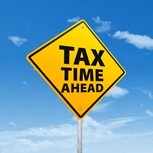
Beginning about this time each year, business owners meet with their accountants to identify their potential income tax obligations for the current year and review planning options. The process generally goes like this:
Step 1: Identify and quantify material components of taxable income, loss, deductions, and credits that have already occurred during the year.
Step 2: Estimate amounts that will arise over the remainder of the year.
Step 3: Project the Federal, state, and local taxes that will result from items in steps 1 and 2.
Step 4: Identify and review options that could favorably impact the projected tax amount.
For the past few years, tax provisions that could come into play in step 4 of the process have lacked clarity until the very end of the year. These so-called “tax extenders” generally involve favorable provisions in the Federal tax code that expired at the end of the preceding year and require legislative action to “extend” the benefits for another year.
The House Ways & Means Committee approved tax extender legislative initiatives impacting this year in September. Such legislation provisions would include a permanent extension and expansion of bonus depreciation provisions that expired for property placed in service after December 31, 2014. The Senate Finance Committee had previously approved similar initiatives. For the most part, both legislative packages share common ground and unlike some other issues facing Congress, support for reenactment of tax extenders exists in both parties.
So if the House, Senate, and both political parties are all in relative agreement, why would Congress wait until the end of the year to enact legislation? Why not pass it now, and make the year-end tax planning process potentially less stressful?
Part of the answer lies in the manner in which our Federal government projects budgetary data and the impact of the timing of tax extender legislation. When extender provisions are allowed to expire and then retroactively extended one or two years at a time, some fairly material shifting of budgetary deficits can arise. For example, if extender provisions had been reenacted prior to the end of 2014, the projected Federal deficit for fiscal year 2015 would have risen to roughly $468 billion rather than the current estimate of $426 billion. When these provisions are retroactively extended near the end of 2015, this difference will be shifted to fiscal year 2016. If similar action is taken each year, an opportunity exists to keep a deferral going.
Congress is, in effect, employing a common principle underlying much of annual tax planning – deferral of an adverse economic reality (in the case of business owners, the payment of income taxes) from the current year to the next, with a long-term goal of keeping the deferral in motion until an appropriate opportunity arises to discontinue it in order to take advantage of lower tax brackets.
Effective tax planning often requires lead time for implementation of material components. We recommend beginning the process now and not waiting until tax extender legislation is enacted, which may not happen until very close to year-end. Some elements of planning may involve waiting to pull the trigger until later in the year; nevertheless, plan development should begin now.
 Michael R. Viens is a director with Kreischer Miller and a specialist for the Center for Private Company Excellence. Contact him at Email.
Michael R. Viens is a director with Kreischer Miller and a specialist for the Center for Private Company Excellence. Contact him at Email.
You may also like:


